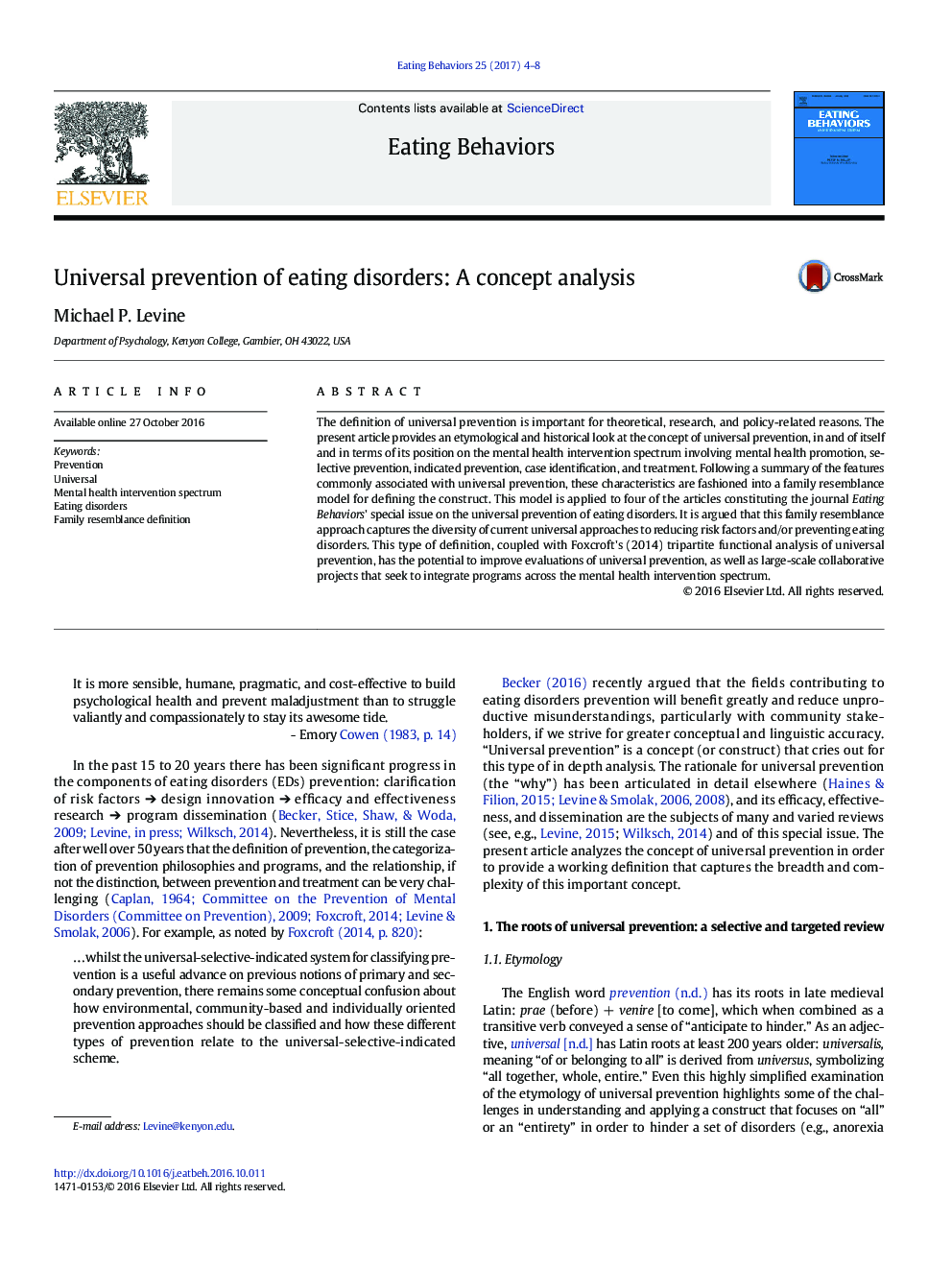| Article ID | Journal | Published Year | Pages | File Type |
|---|---|---|---|---|
| 5038766 | Eating Behaviors | 2017 | 5 Pages |
â¢Universal prevention has been a complex, potentially confusing construct for over 30 years.â¢Universal prevention is best understood as part of the Mental Health Intervention Spectrum.â¢There are neither necessary nor sufficient conditions for defining universal prevention.â¢The family resemblance model is reasonable and practical in defining universal prevention.
The definition of universal prevention is important for theoretical, research, and policy-related reasons. The present article provides an etymological and historical look at the concept of universal prevention, in and of itself and in terms of its position on the mental health intervention spectrum involving mental health promotion, selective prevention, indicated prevention, case identification, and treatment. Following a summary of the features commonly associated with universal prevention, these characteristics are fashioned into a family resemblance model for defining the construct. This model is applied to four of the articles constituting the journal Eating Behaviors' special issue on the universal prevention of eating disorders. It is argued that this family resemblance approach captures the diversity of current universal approaches to reducing risk factors and/or preventing eating disorders. This type of definition, coupled with Foxcroft's (2014) tripartite functional analysis of universal prevention, has the potential to improve evaluations of universal prevention, as well as large-scale collaborative projects that seek to integrate programs across the mental health intervention spectrum.
